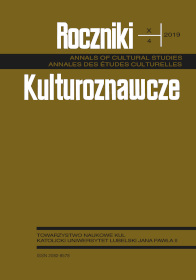The Vices against the Virtue of Temperance among the Atyap Cultural Heritage of Africa: A Philosophical Approach
Abstract
The place of virtues in moral discussions continues to occupy a central position. This is because moral arguments revolve around virtues and vices. It is taken for granted that virtues produce commendable good moral actions, whereas vices lead to immoral actions that are widely condemned. Virtue ethicists ground their arguments on the assumption that human actions are directly linked to either virtues or vices. But then, to each of the virtues, there exists a degree of excess or deficit, above or below which we begin to speak of counter habitual predispositions, called vices. If this is so, then there should be a way of ascertaining the measure on the basis of which we distinguish between a virtue and its vice. How do we justify the criteria for arriving at such a measure? More so, there is a traditional classification of virtues into cardinal and peripheral virtues: what exact moral features could a virtue exemplify in order to be classified as a cardinal rather than a peripheral virtue? In this article, the Author attempts the analysis of one of the so-called cardinal virtues, precisely that of temperance. He tries to highlight the concept of shame verses honour as viewed and practiced among the atyap cultural heritage in Africa. The goal is modest, namely: to highlight those moral features which justify the classification of temperance as a cardinal virtue and to account for the standard or measure which account for the distinguishing of the vices associated with temperance.
References
Aristotle. The Nicomachean Ethics. Translated by D. Ross. New York: Oxford University Press, 2009.
Assmann, Jan. Religion and Cultural Memory: Ten Studies. Translated by Rodney Livingstone. Stan¬ford: Stanford University Press, 2006.
Augustine, Thomas. Virtue of Temperance and Its Vices. London: Blackburn, 1999.
Blom, John J. Descartes: His Moral Philosophy and Psychology. New York: New York Uni¬versity Press, 1978.
Carr, David. “The Cardinal Virtues and Plato’s Moral Psychology”. The Philosophical Quar¬terly 38 (1988): 186–200. DOI: https://doi.org/10.2307/2219923.
Cunningham, Stanley B. “Review of Virtues and Vices and Other Essays in Moral Philosophy”. Dialogue 21, Issue 1 (1982): 133–137. DOI: 10.1017/s001221730001742x.
Den Uyl, Douglas J. The Virtue of Prudence. Studies in Moral Philosophy, vol. 5. New York: Peter Lang, 1991.
Green, Joel. Dictionary of Scripture and Ethics. Grand Rapids, MI: Baker Academic, 2011.
Harvey, Peter. An Introduction to Buddhism: Teaching, History and Practices, England: Cam¬bridge University Press, 1990.
Heim, Maria. Differentiations in Hindu Ethics. In The Blackwell Companion to Religious Ethics, edited by William Schweiker. Cambridge: Cambridge University Press, 2005
Leiter, Brian. “Nietzsche’s Moral and Political Philosophy”. The Stanford Encyclopedia of Philosophy (Spring 2020 Edition), Edward N. Zalta (ed.). https://plato.stanford.edu/archives/spr2020/entries/nietzsche-moral-political/.
Lochtefeld, James. The Illustrated Encyclopedia of Hinduism. New York: Rosen Publishing, 2009.
McManaman, Douglaus. The Virtue of Temperance. Chicago: Light Books, 2007.
Niemiec, Ryan M. “VIA Character Strengths: Research and Practice (The first 10 years)”. In Well-Being and Cultures: Perspectives on Positive Psychology, edited by Hans Henrik Knoop & Antonella Delle Fave, 11–29. New York: Springer, 2013.
Paul, Ford. “Franklin’s 13 Virtues: Extract of Franklin’s autobiography”. FTRAIN.com. Ac¬cess¬ed 27 May 2020. https://www.ftrain.com/franklin_improving_self.
Personality, Human Development, and Culture: International Per¬spec¬tives on Psychological Science, edited by Ralf Schwarzer. Hove: Psychology Press, 2012.
Peterson, Christopher, & Martin E.P. Seligman, Character Strengths and Virtues: A Hand¬book and Classification. Washington, DC & Oxford: Oxford University Press & American Psycho¬logical Association, 2004.
Plato. Republic. Translated by G. M. Grube. Indianapolis: Hackett Publishing Company, 1992.
Rao, G. Hanumantha. “The Basis of Hindu Ethics”. International Journal of Ethics 37, no. 1 (1926): 19–35.
Shryack, Jessica, Michael F. Steger, Robert F. Krueger, & Christopher S. Kallie. The Struc¬ture of Virtue: An Empirical Investigation of the Dimensionality of the Virtues in Action Inventory of Strengths. Trent: Elsevier, 2010.
Sogoba, Mia. “Atyap”, Cultures of West Africa, Glossary, 9 Dec. 2018. Accessed: 8 Jan. 2020. https://www.culturesofwestafrica.com/glossary/atyap/.
Sturgess, Stephen. The Yoga Book: A Practical Guide to Self-realization. London: Watkins Pu¬blishing, 2013.
Thompson, Joseph P. The Definition of Virtues (Oxford: Oxford University Press, 1974.
Whiteman, Henry. Comparative Religion, New York: Hendrick Inc, 1987.





